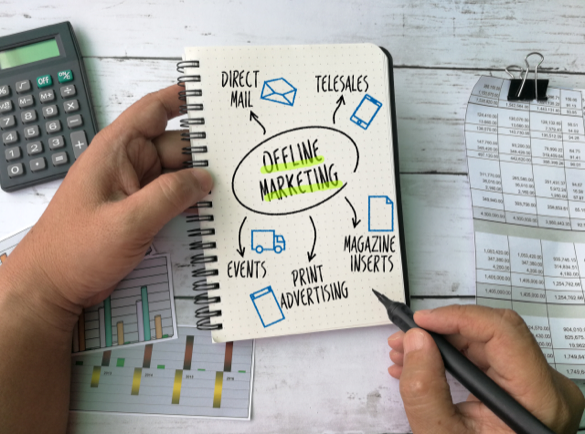
2017 isn’t the year for you to be sitting down twiddling your thumbs.
You want to be busy, but the kind of busy where you know that every minute you are working, you are making a lot of money for you and your company. More money means more perks, and more perks lead to an enhanced quality of life.
The thing is, all of this starts from the lead funnel that your organisation has in place.
The marketing that the business is doing must generate qualified leads that will allow people in your organisation to nurture and close the sale. Without it, there won’t be any work, money or even any jobs.
Master the following critical lead generating components such as landing page design and having the right sales copy, and your business might just have an endless pot of gold waiting at the end of the lead-generating rainbow.
Implement a marketing strategy that will allow the lead-pipeline to always be full.
Your organisation needs to tap into the marketing channels where your target market hangs out. These channels need to drive interested prospects through the lead-generating funnel so that your organisation will be able to convert more sales.
Quite often, marketers get caught up with the common lead-generation channels. For example, SEO, PPC, display and email marketing. It’s good to implement these marketing channels in your promotional activity, but don’t neglect or dismiss channels where tribes of your customers hang out. This could include web forums, question and answer websites, vertical search engine portals or emerging social media platforms.
Qualify the potential lead as much as possible.
Increased leads to the business won’t be beneficial if those leads don’t convert to sales.
Many marketers make the mistake of investing in new web marketing communication channels without doing the research to qualify the audience. It’s understandable because many marketers work towards increased KPI targets as a part of their job role, rather than implementing a web strategy that strictly focuses on profit.
Unqualified leads cost time, money and resources. Negate this by doing the following.
1. Get the lead to fill out a form.
Ideally, you should incentivise the lead to register a form so they can be listed on your organisation’s database. This will reaffirm their commitment to their interest in your offer, while also providing your organisation with the opportunity to remarket to them in the future and nurture them into a sale.
2. Educate the lead.
A well-educated lead is the best type of lead for sellers to receive.
They are already familiar with the product or service that is being offered and the majority (if not all) of their questions have been answered, so it is a matter of proceeding with the sale.
If your leads are still asking many questions by the time they get to the sales process, you will need to make improvements to the education process so that your leads will be informed enough to proceed with the sale prior to the time your organisation pitches to them.
Have the lead commit to a minor purchase to establish a commercial relationship with your organisation.
Ultimately, you want your leads to spend money with your organisation.
However, in the lead’s mind, they want to make sure that they invest in a low-risk solution. Have your marketing team implement an entry-level product or service that leads can easily purchase and be satisfied with. This will allow them to build more trust with your organisation and they will be more inclined to proceed with future sales.
Improve conversions by targeting niche audiences.
Everybody in this world is different.
In some cases, people will be more similar than others but, ultimately, people always want a solution that is customised for them. You could be selling a Ferrari and have a hot lead that says no because the car cannot be provided to them that day in the colour purple.
The people responsible for your organisation’s marketing need to identify micro-niches, so that it will be easier to convert leads into sales. See if there’s a way for them to get additional market insight, which shows potential buyer’s desires, wants, needs and motives. This will help to structure a lead generation campaign with a higher than average conversion rate.
Focus on building a profitable lead portfolio.
A lot of business people fail to look at the big picture.
In order to generate sales, leads need to be acquired and there is a cost associated with it. People want to get as many free leads as possible, but they will essentially be ‘missing a trick’ if this is the only thing that they are trying to achieve.
There might be several other traffic sources that can add hundreds or even thousands of dollars to their business’s profits. But sayings like ‘I don’t want to pay for Adwords because it is too expensive’ are far too short sighted.
See how much you can afford to spend in order to acquire a new customer and the lifetime profit that you can gain from the customer. Focus on the profit that you can make in-between.
If your lead-generation is implemented correctly, your organisation will never have to worry about getting sales or making a profit. Audit your current lead-generating setup to see if there are any changes that can improve your lead acquisition, conversions and profits over the long-term.


